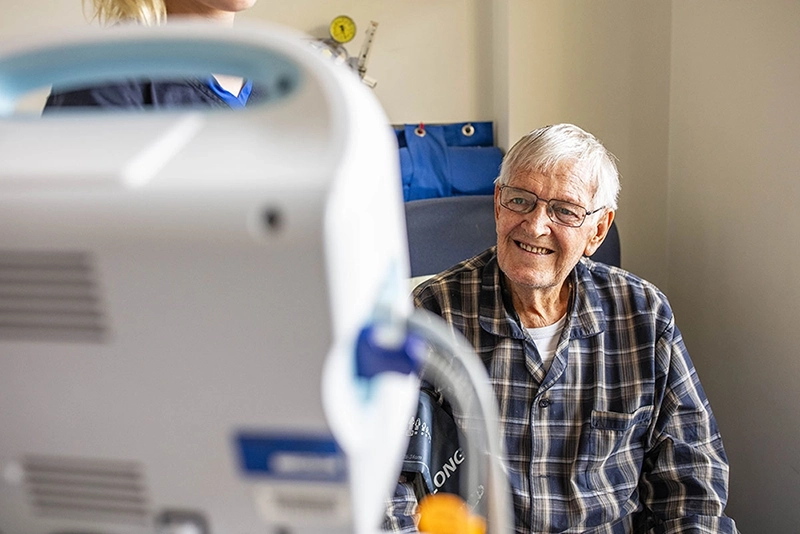عرض هذه الصفحة باللغة العربية
Radiotherapy - Arabic
查看此页面的简体中文版本
Radiotherapy - Mandarin
Xem trang này bằng tiếng Việt
Radiotherapy - Vietnamese
Radiation therapy
Radiation therapy (or radiotherapy) uses radiation totreat and manage cancer. Radiation therapy treats cancer by damaging cancer cells while limiting the impact to healthy cells.
Some damage may still occur to normal cells immediately around the treatment area. As with chemotherapy, damage to normal cells may cause side effects. These can include skin reactions and tiredness.
Radiation therapy won’t cure the cancer. For this reason, it’s not as common in the treatment of pancreatic cancer as chemotherapy. However, it can help to control the cancer and slow down its growth.
There are various ways to use radiation therapy in your treatment. Your specialist may recommend radiation therapy to:
- shrink the tumour before surgery to make it easier to remove.
- destroy the remaining cancer cells after surgery to help prevent the cancer from returning.
- help relieve tumour-related symptoms.
Types of radiation therapy
There are two different types of radiation therapy (for both procedures you will be awake):
- External radiation therapy – this is the most common procedure. It involves an external beam targeting your pancreas from outside your body. You are not radioactive after this procedure.
- Internal radiation therapy – you will receive an injection of radioactive material near the cancer. You may release small amounts of radiation for a few days after the procedure. Your doctor will tell you what you need to do if this is the case.
You are awake for both types of radiation therapy.
If radiation therapy is part of your treatment, your medical oncology team will provide you with detailed information, including potential side effects based on your individual treatment plan. This will include information on preparing for radiation therapy, what to expect after radiation therapy and how best to manage side effects.
Read more about other treatments
Chemotherapy and radiation therapy

